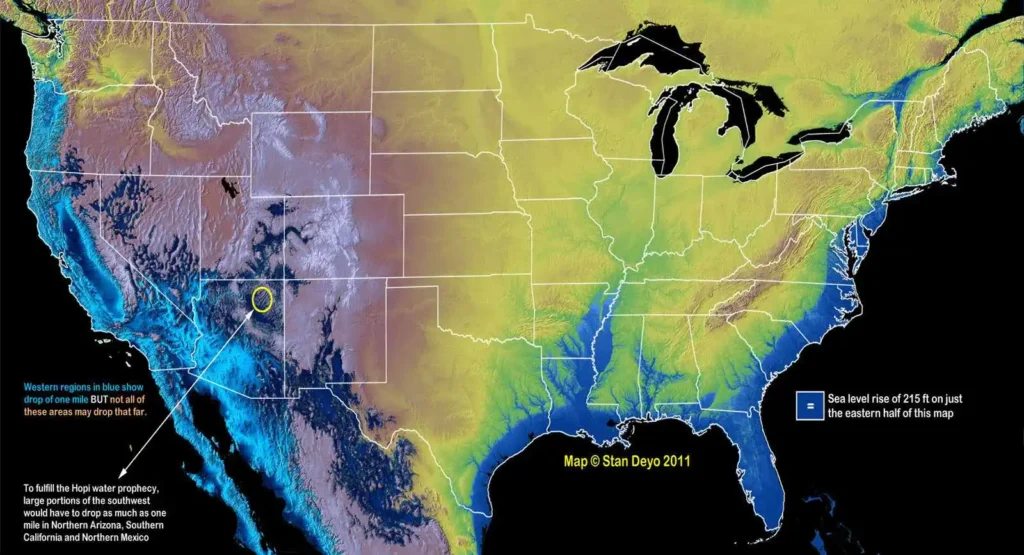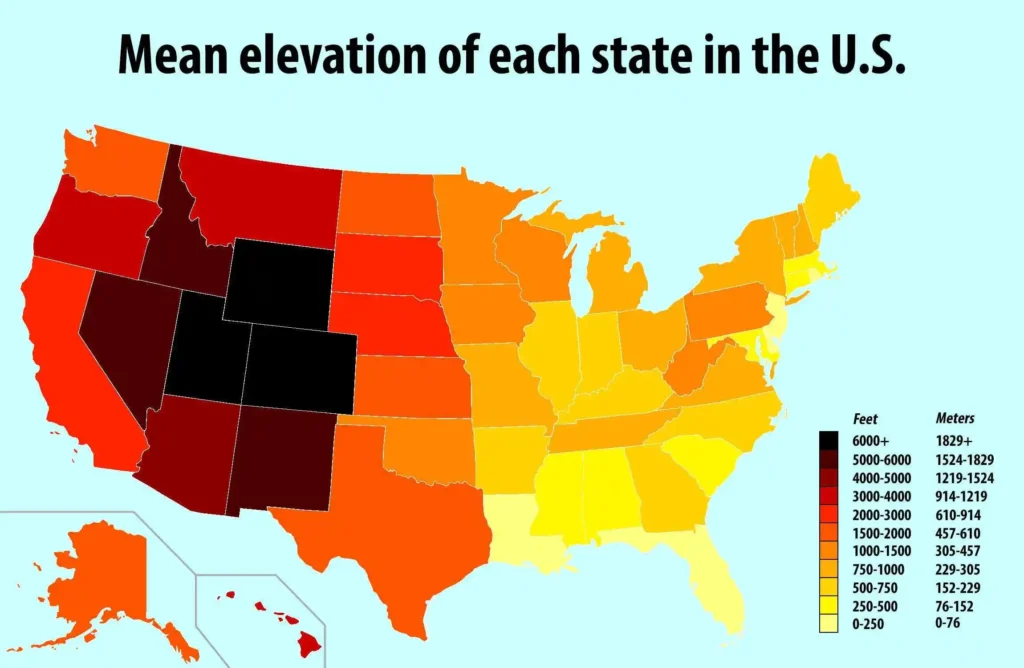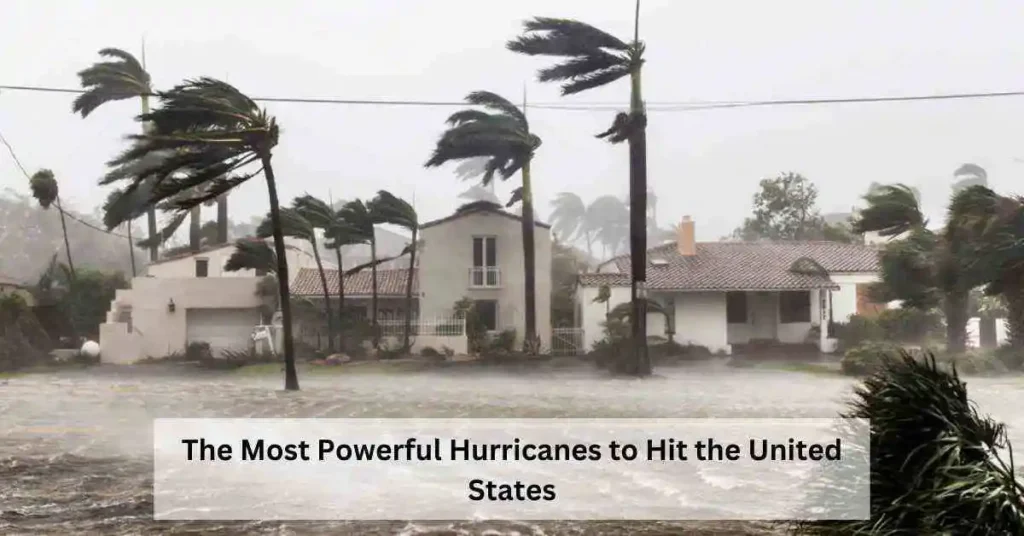
The Real Story of Ascent In Florida What Is The Distance To Below Sea Level?
Do you truly want to know if Florida is below sea level? You are not alone, either. A lot of people believe that Florida is half buried in the ocean.
Florida has little to no elevation change and is largely flat. At just 345 feet, Britton Hill, which is located on the Florida/Alabama border, is the highest point in Florida.
Therefore, it is unlikely that you are visiting Florida to take in the mountains.
Although Fl is not below sea level, its port cities are liable to the impacts of sea level rise and an increase in the likelihood of storms.
Florida’s coasts are home to a large portion of the state’s population, who mostly come for trips or to reside there to escape the winter and enjoy the state’s constant sunlight.
For this reason, a lot of guests visit Florida’s beaches in December.
However, Florida is more at risk for floods and other extreme weather events brought on by climate change due to increasing sea levels.
What Part Of Florida Is Below Sea Level?

is the state of Florida below sea level? Very few areas of Fl are above sea level now, having formerly been below it.
Many worry that areas of Fl may soon be under sea level due to the melting of polar ice caps and glaciers throughout the world, as well as the increasing amount of tropical cyclones.
Still, because of its pleasant average year-round temperatures and mild winters, people are traveling in droves to Florida.
The average elevation of the Everglades, which are located swiftly outside of Miami, is just around 20 feet.
Because it is primarily marshland and virtually hostile. This region is sometimes referred to as being “under sea level.”
Still, a lot of visitors come here to take part in gator wrestling, airboat trips, and, most recently, python hunting.
Hovering above FL and the Everglades from Fort Lauderdale, a helicopter tour is a great way to view how much of the state is truly below sea level.
The Everglades, are primarily made up of marsh and water. Will be flown over during this quick 35-minute trip.
What Part Of Florida Is In Danger If Sea Levels Rise?

Due to its lowest elevation and raised susceptibility to storms and hurricanes, Southern Florida is especially at risk from rising sea levels.
Since it is also the state’s most heavily inhabited territory, more people will be impacted as long as sea levels rise.
Most people remember the collapse of the 12-story Champlain Towers homes complex in Surfside Miami.
While the exact cause of this building’s collapse is unknown, some scientists think that South Florida’s shortages and subterranean seawater coming to the surface are to blame.
If this is accurate, a great deal more people in the Sunshine State are at risk because 76% of the state’s residents reside near the shore.
What State Has The Lowest Elevation?

is Florida under sea level? Florida is a great candidate for the effects of climate change due to its low elevation and hurricane potential. Some people would be startled to find out that Florida is not the state with the lowest elevation in the union.
With a mean height of only over 100 feet Florida is above sea level.
Florida is the third-lowest state in terms of average level despite its plain terrain and closeness to the ocean.
However, because of its location and exposure to storms.
The extensive coastline of Florida makes it one of the states most vulnerable to rising sea levels, with its low-lying parts highly affected by any increase in sea level. That runs across the Atlantic and Gulf of Mexico.
Especially when storm surges from hurricanes occur.
At only 60 feet above sea level, Delaware is the state with the lowest average elevation.
This little state’s low-lying coastal areas make it exposed to the risks of rising sea levels and coastal floods, even though it is less hurricane-prone than Florida.
Due to their same average heights of 100 feet above sea level.
Florida and Louisiana are both physically fragile. But Louisiana also has to deal with an extra issue of subsidence, which is the gradual sinking of the ground.
Combined with increasing sea levels, this presents an even larger threat to coastal communities like New Orleans.
On the other hand, Florida is especially vulnerable to climate change due to its long coastline and hurricane exposure.
Florida is one of the states most susceptible to future floods and coastal damage due to its low elevation and rising hurricane activity, forcing intense planning and adaptation to deal with the changes.
How Often Is Florida Hit By Hurricanes?

Florida seems to be in the headlines often all over hurricane season, whether it be from hurricanes or tropical storms.
Hurricanes appear to be hitting Florida often, whether it is on the Gulf of Mexico coast, in Key West, or in any of the state’s major cities.
The rising temperature of the Atlantic Ocean and global warming are partially to blame for this. It appears that as global temperatures rise, hurricanes are becoming more potent and common.
However, how often does a tropical storm or hurricane make landfall in Florida?
Florida altitude above sea level experiences hurricanes every three years on average, while crucial storms strike Southwest Florida on the Gulf side of the state every five years.
Due to the Gulf of Mexico’s greater sea temperatures, which tend to bolster storms, hurricanes near Florida’s west coast are often a little stronger.
Which State Has Been Hit By The Most Hurricanes?

With nearly 40% of all named storms making landfall there. Florida has the sad distinction of being the most hurricane-prone state in the union.
Florida is quite at risk for hurricanes because of its location between the Atlantic Ocean and the Gulf of Mexico. Especially from June through November when hurricane season is at its height.
It is a common target for these strong storms due to the warm seas and suitable air conditions.
how much of Florida is below sea level? More hurricanes than any other state in the union have made landfall in Florida to date—a record 120.
37 of them were defined as Category 3 or greater. Which means that their wind speeds were higher than 111 mph.
Major storms like Hurricane Michael in 2018 and Hurricane Andrew in 1992 have left a lasting effect on the facilities and communities of the state, causing terrible chaos.
Hurricanes rated as high as Category 3 and higher can cause severe floods and storm surges in addition to severe winds, especially along Florida’s vast coastline.
Such storms can have long-term effects on the local economy and ecology. As well as cost recovery operations and resident displacement.
It’s critical for anybody who is considering moving to or visiting Florida to be aware of the state’s history with hurricanes.
To be ready for the likelihood of these severe climate events.
Florida has taken action to lessen the harm of storms, but the threat is still present.
Measures taken include early warning systems, evacuation strategies, and recent building regulations made to resist strong winds.
FAQs
After Delaware and Louisiana, Florida has the third-lowest average elevation in the United States. At a little over 100 feet (30 meters) above sea level. The climate of Florida is mostly level, with very few notable elevation differences. The state’s highest peak, Britton Hill, is the lowest high point of any US state at only 345 feet (105 meters) above sea level.
Due to its low height and long coastline, Florida can be particularly subject to floods and hurricane-related storm surges. Even little rises in water levels can have major impacts on Florida’s upland and coastal towns as sea levels rise. Due to their low elevation, several of the state’s largest cities including Miami, Fort Lauderdale, and Tampa are more at risk of floods in the future.
The effects of climate change are causing sea levels in Florida to rise more quickly. Since 1950, the region’s sea levels have risen by around 8 inches on average. But according to new research, the pace of increase is accelerating. Projections predict that, depending on global emissions and climate policy, sea levels may rise by an extra 1 to 3 feet by 2100.
Due to regional factors including land subsidence and ocean currents. The pace of sea level rise along Florida’s beaches might vary somewhat. For example, Ocean level rise is occurring more quickly in South Florida in areas like Miami and the Florida Keys. Low-lying coastal regions are already more often suffering “sunny day” flooding. High tides force seawater into streets even in the absence of rain or storms. This rising water poses a serious threat to these places. Long-term effects of this surge may include building collapse, forever flooding of some places and resident exodus.
Britton Hill is the highest point in FL, rising just 345 feet (105 meters) above sea level. It lies close to the Alabama border in Walton County, on the Florida Panhandle. Britton Hill, at 345 feet, is the lowest point in any U.S. state, showing Florida’s low-lying and mostly level terrain.
Britton Hill and its environs are far less liable to floods and sea level rise than the coastal parts of FL, despite being lower in elevation than the rest of the nation. However, the majority of the state’s population is close to the shore. Where sea level rise poses a far greater hazard and heights are much lower.
Conclusions
Florida is not below sea level as of yet, but temperatures throughout the world continue to increase.
It will become more liable to the effects of climate change.
Coastal states like Florida face grave danger from rising sea levels.
Even if the state might not entirely submerge shortly, low-lying sections have already begun to encroach on water, especially at high tides and storm surges.
This is an essential issue if you intend to move to the Sunshine State or are thinking about visiting.
In some places, these variables may have long-term effects on the infrastructure, property prices, and general standard of living.
perhaps while it would take decades or perhaps centuries for all of Florida to soak. Climate change is already making hurricanes more frequent and severe.
The state is seeing more erratic weather patterns, larger hurricanes, and more flooding.
In years to come, these environmental changes could call for more caution and flexibility for both locals and tourists.
As Florida deals with these issues, planning which includes making assets in resilient areas and infrastructure. That is resistance to flooding will be crucial.

My name is Zahra Tariq, and I have been traveling in Florida for the past 8 years. I have explored Florida’s beauty during this time and have seen many beautiful places in the state.
